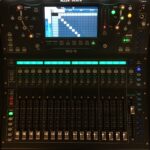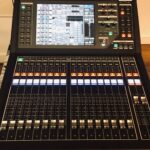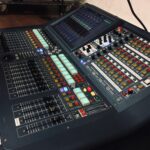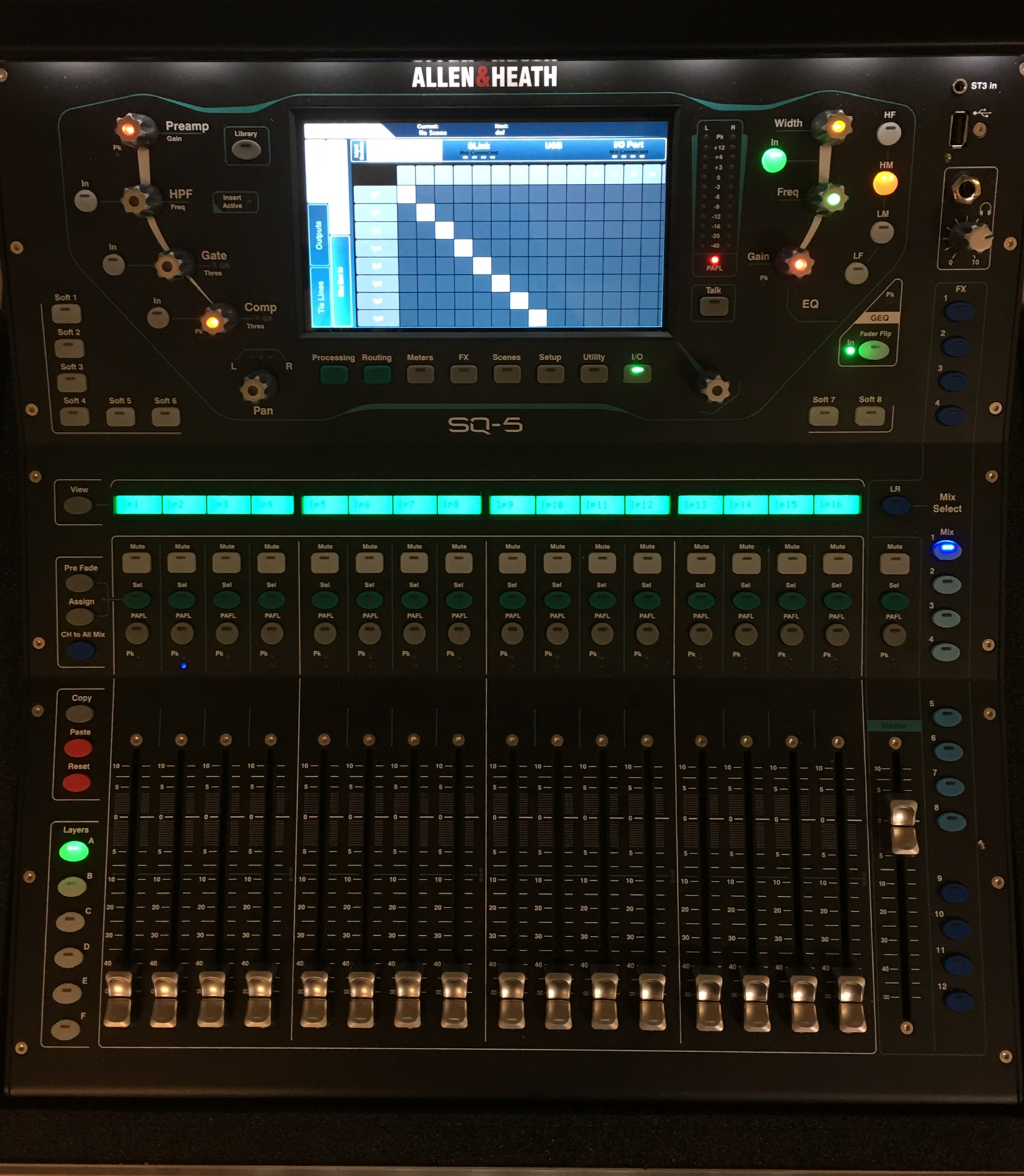Part of the fun of working in live music is the variety and unpredictability it inevitably brings. Great as that may be, my bosses recently set up a training day for my colleagues and myself, using some of the consoles likely to be installed on future client contracts. We spent the day getting our geek on, and these were my top three.
 # 3 Allen & Heath SQ5
# 3 Allen & Heath SQ5
The SQ5 is an attractive desk – the digital display looks slick and modern, while the touch screen features are precise and impressive. On first appearance, it feels sturdy, which I later find out is something the company prides itself on – they rigorously test the materials for resilience and longevity of moving parts. With 48 processing channels, 16 faders, and a 96kHz mix core, the desk can handle plenty before I need to worry.
I found the main setup to be a little time-consuming at first but well worth it in the end. Once the balance was struck (or learned) between using the touch screen and the controls, life was good! The copy and paste function is sure to be a timesaver, and the soft controls are presented in a logical way, also making life easier.
The detailed level of control and precision available (I stopped counting all the EQs on offer) plus the easy personalisation all seemed very intuitive. The final plus for me was the ability to save the settings onto USB, ensuring your setup stays just how you like it.
#2 Yamaha QL1
Nobody had a bad word to say about the QL1. It comes with 16 inputs, 8 outputs, and 16 faders, and has 33 mono and 8 stereo mix channels, and 16 mix and 8 matrix busses. Almost certainly the most foolproof of all the desks (if there is such a thing), there’s an effortless feel and ease of locating everything on it. The visuals and functions are all clear and easy to use, and GEQ, soft controls, and DCAs are all quick and obliging. The desk equivalent of a comfortable pair of shoes.
# 1 Midas Pro 2c
I was struck by how at home I felt with the 2c, owing to it perhaps to the feeling of 90s nostalgia from the screen and mouse functions. For me, it was the most visual of the desks, and at times felt more like using a DAW, which I rather liked. For a desk with 156 inputs, 166 outputs, and 64 simultaneous input processing channels, it’s very approachable, which is another plus.
Although some of the controls and buttons can look and feel quite old school, they are just a rouse to impress you all the more when you discover the touch response feature – a light tap to the faders will display your current level without moving, and when done to the knobs will select that setting control on-screen. I really liked this for being so clever, but mostly for being incredibly useful and practical.
The GEQ function works great overall, and as standard, the desk can save lots of scenes and shows as presets, with the necessary option of saving to USB for future work and clarity. The desk feels great to use, makes sense, and has plenty of great features that add a little extra.
